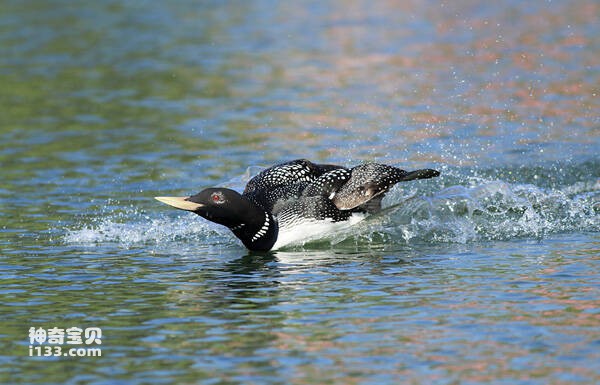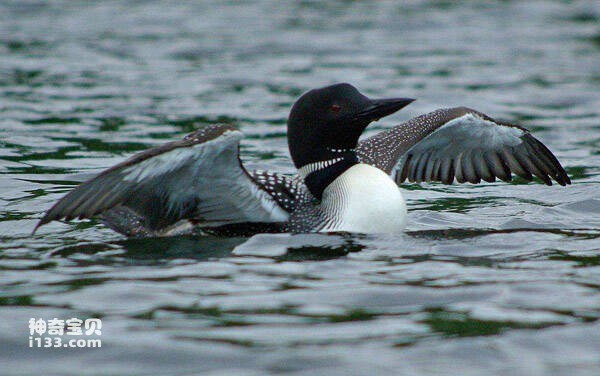Gavia adamsii
IUCN
LCBasic Information
Scientific classification
- name:Gavia adamsii
- Scientific Name:Gavia adamsii,Yellow-billed Loon,White-billed Diver
- Outline:Waterfowl
- Family:
Vital signs
- length:75-100CM
- Weight:No textual research information is available
- lifetime:No textual research information is available
Feature
It is the largest diver
Distribution and Habitat
The birds breed in the Kola Peninsula, Korgiev Island, Novaya Zemlya, Yamal Peninsula, and Temer Peninsula in the far north of Russia, and continue eastward across northern Siberia via the Indygirka and Kolyma rivers to Magatan on the coast of Okhotsk and Chukotka Peninsula in the far east of Siberia. It then passes through the Bering Strait to St. Lawrence Island and northern Alaska in the United States and the northern coast of Canada and its islands. Wintering in Kamchatka, Sakhalin, southern Alaska, off the coast of Norway, and occasionally Sweden, the British Isles, the North Sea, the Baltic Sea, Italy, Korea, Japan, China's Liaodong Peninsula, and Fujian.
Distribution in China: Liaodong Peninsula (Liushutun), Fujian (Fuan).
Native distribution: Belgium, Canada, China, Denmark, Finland, Japan, North Korea, South Korea, Mexico, Norway, Sweden, USA.
Distribution: Austria, Belarus, Bulgaria, Croatia, Czech Republic, Estonia, Faroe Islands, France, Germany, Greenland, Ir
Appearance
The head and neck of the bird are black, with blue-green metallic luster, with a discontinuous band of white spots at the throat, and a wide white band from the front neck to the side of the neck, tapering at the front neck and interrupting at the middle of the front neck; The upper body is black, the back and wings are covered with white spots, the shoulders have many identical, rectangular white patches, and the tail is covered with small pairs of white spots; The lower body is white; The breast side and sides are black, with white stripes and spots arranged in pairs; Undertail coverts with black markings.
The upper body of the winter feather is grayish-brown, the head and the back of the neck are grayish-brown, and there is a white circle around the eyes; The ear area often has a dark brown spot; The lower body is white, the white of chin, throat and front neck and the gray brown of back neck are not clear, and they are not completely separated. The white spots on the back and wi
Details
The white-billed loon (Gavia adamsii) is a large waterfowl belonging to the Lobiidae family of the order Lobiidae. The white-billed loon is similar in appearance to the great North American loon (G.i. mmer), so some scholars have considered it a subspecies of the Arctic loon. However, due to their overlapping breeding areas in North America, and differences in individual size, beak color, and shape (the white-billed loon is larger and has a lighter beak), most scholars classify it as a separate species.

White-billed loon often live in pairs or small groups, but occasionally a single loon can be found in larger lakes and seas, but not in small ponds. In the water, the body sinks deeper, the neck is straight, the head is raised, and the mouth is tilted upward. Fly with your head and neck pointing straight forward and your feet sticking out behind your tail. Flying fast, but difficult to take off from the water, need to run. The cry was high and coarse. Usually silent at sea, but screams falsetto in breeding grounds.
White-billed loons feed mainly on fish, but also on aquatic insects, crustaceans, mollusks, and other invertebrates. Foraging is done by diving, usually in tundra lakes and at sea.

The spring migration of white-billed loons occurs in April-May, arriving at the breeding grounds in late May and early June. Autumn migrates in September-October, arriving at the wintering grounds in October-November. Winter migratory birds are rare in China.
The breeding period of the white-billed loon is from June to August, and it breeds in the Arctic and subarctic tundra and tundra forest areas. Nested on the shores of tundra lakes, the nest is made of dead grass, extremely simple. Each litter lays 1-2 eggs, usually 2. The eggs are brown with small dark brown spots, and the size of the eggs is 80-95 mm ×53.5-66 mm, with an average of 89 mm ×56.9 mm.

The white-billed loon population is in rapid decline due to unsustainable hunting, and the specific data needs to be further quantified. In 2007, a record of about 1,000 white-billed loons in the Bering Strait region showed that hunting was the biggest threat to the species' survival. The white-billed loon is threatened by coastal oil spills in both its breeding and wintering grounds. In the breeding zone of Alaska's polar coastal plain, 90% of nesting sites are threatened by oil and gas development land, and 29% of nesting sites are in broad areas used for oil and gas transportation. Wintering white-billed loons may be threatened by heavy metal pollution and entanglement in fishing nets. Climate change could become a future threat to the species, while the population's relatively low reproductive rate and special habitat needs are also factors in the threat to the population.
In 2006, the U.S. Fish and Wildlife Conservation Service, together with various partners, proposed a protocol aimed at protecting and reducing threats to the white-billed loon population in western and northern Alaska. There is a need to capture populations, establish monitoring programs to observe population trends, assess hunting levels and control measures, and compare the possible impacts of ecological and climate change on populations.
Listed in the Red List of Species of China (2004), assessed grade - not assessed (NA, marginal distribution in China).
Listed in the International Union for Conservation of Nature Red List of Threatened Species (IUCN) ver 3.1:2010-2018 - Near Threatened Species (NT).
Protect wild animals and eliminate wild meat.
Maintaining ecological balance is everyone's responsibility!








